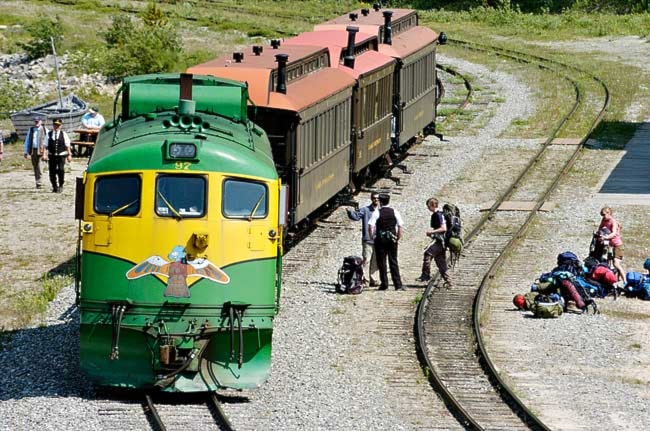Road or rail? That is the question Yukon miners and the territorial government are asking.
Chuck Eaton has pushed the issue to a head with his hopes of bringing the White Pass and Yukon Route freight cars back to Whitehorse, or at least Carcross.
Eaton is the president of Eagle Industrial Minerals, which plans to run a magnet through the old Whitehorse Copper tailings for magnetite ore. Eaton wants to send the iron-rich ore to Skagway’s port and on to Asian markets.
Preferably, part of this journey would be done by rail.
The Californian investment banker has approached the Yukon government and White Pass to see how plausible the idea is. Both are warm to the idea.
“It seems very interesting,” said Harvey Brooks, deputy minister of Economic Development. “But we have to do more homework.”
The department has already done one study that shows Eaton’s rail plans could be a win for all involved.
Eugene Hretzay, president of the White Pass, agrees that’s the case.
“It’s a win for the shippers, I think it’s a win for the government, I think it’s a win for the environmentalists, I think it’s a win for the tourism industry,” said Hretzay. He’s already pitched the plan to the U.S. government.
Using trucks to haul ore from Eaton’s site at the old Whitehorse Copper mine to Skagway would mean more traffic, longer border waits, more need of roadwork, and more noise and pollution along the scenic route. Eaton’s plans would have a truck leave the old mine every 48 minutes.
For the Yukon government, it’s the difference between a lot of money up front, or a lot of money over time, said Brooks.
But, to make this happen, Hretzay needs money from the government or miners, he said.
Rebuilding the railway from Carcross back to the yard in Whitehorse would cost about $1 million for every mile, for a total of about $50 million, he said.
To just bring freight back to Carcross would cost about $10 million, said Hretzay. White Pass would need to buy freight cars, repair rail lines and hire additional staff, he said.
The Alaskan and U.S. governments already plan to sink a lot of money into Skagway’s port to prepare for an anticipated influx of ore from new mines coming online, said Hretzay. Freight service would provide another 40 to 50 permanent jobs in Skagway, he said.
And it would be more efficient than depending on roads.
One ore ship can hold about 30,000 tonnes, he said. To fill that up would take 600 trucks.
A train can carry 1,500 tonnes. That means it would only take about 20 trains to do the same job.
To avoid interfering with Hretzay’s tourist trains, freight service would only run at night, he said.
Eaton’s mining operation is only expected to run for six or seven years, but the railway infrastructure would remain for other mines to use.
Selwyn Resources, for one, has already expressed interest, said Hretzay.
That’s another reason for the government to pull together the cash to upgrade the railway, rather than make deals with individual mining companies, he said.
“They can give me the money or they can spend a whole lot more money,” said Hretzay.
“We can discuss some sort of an earn-out or a forgivable loan, or something like that. And if they don’t want to do it, fine. I have my tourism business and I can continue, and they can go ahead and build their highways.”
Contact Roxanne Stasyszyn at
roxannes@yukon-news.com
